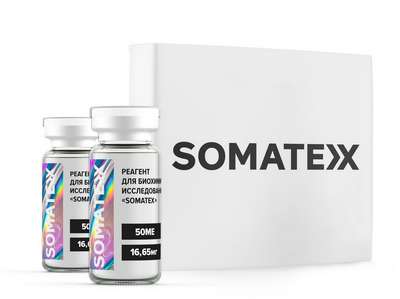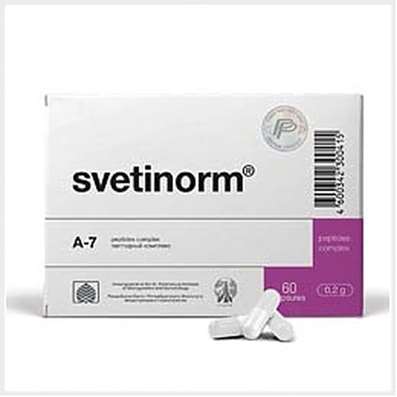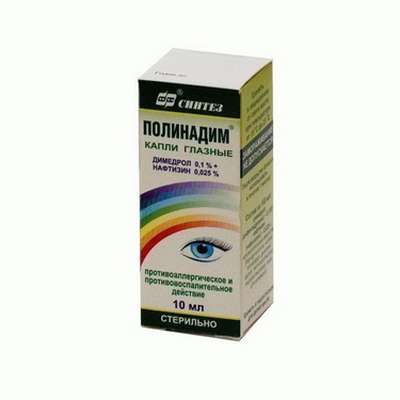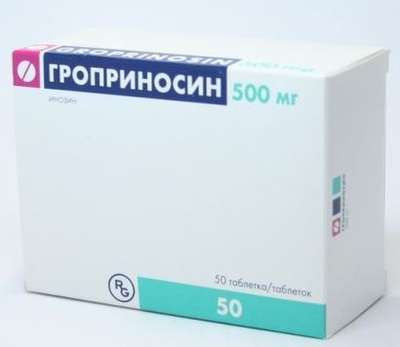Instruction for use: Maprotiline
I want this, give me price
Latin name of substance Maprotiline
Maprotilinum (genus. Maprotilini)
Chemical name
N-Methyl-9,10-ethananthracen-9 (10H) -propanamine (as hydrochloride)
Gross formula
C20H23N
Pharmacological group:
Antidepressant
The nosological classification (ICD-10)
F06 Other mental disorders due to brain damage or dysfunction or somatic disease: Somatogenic depression; Somatogenic psychosis
F06.3 Organic mood disorders [affective]: Secondary affective symptoms; Organic depression; Affective disorders; Depressed mood with elements of anxiety
F32 Depressive episode: Adynamic subdepression; Astheno-adynamic subdepressive states; Asthenoadressive disorder; Astheno-depressive disorder; Asthenodepressive state; Astheno-depressive state; Major Depressive Disorder; Vyaloapatichesky depression with retardation; Double Depression; Depressive pseudodement; Depressive illness; Depressive mood disorder; Depressive disorder; Depressive mood disorder; Depressive state; Depressive disorders; Depressive syndrome; Depressive syndrome larviated; Depressive syndrome in psychoses; Depressed masks; Depression; Depression Depletion; Depression with the phenomena of inhibition within the framework of cyclothymia; Depression is smiling; Involutional depression; Involutionary melancholy; Involutional depression; Manic-depressive disorder; Masked Depression; Melancholic Attack; Neurotic depression; Neurotic depression; Shallow Depression; Organic depression; Organic depressive syndrome; Simple depression; Simple melancholic syndrome; Psychogenic depression; Reactive depression; Reactive depression with moderate psychopathological symptoms; Reactive depressive states; Reactive depression; Recurrent depression; Seasonal depressive syndrome; Severostatic depression; Senile Depression; Symptomatic Depression; Somatogenic depression; Cyclotymic depression; Exogenous depression; Endogenous depression; Endogenous Depressive Conditions; Endogenous Depression; Endogenous depressive syndrome
N95.1 Menopausal and climacteric conditions in women: Atrophy of the mucous membrane of the lower sections of the genito-urinary tract caused by estrogen deficiency; Vaginal dryness; Vegetative disorders in women; Hypoestrogenic conditions; Estrogen deficiency in women in menopause; Dystrophic change in the mucous membrane in menopause; Natural menopause; Intact uterus; Climax; Men's Climax; Menopause in women; Menopause Depression; Menopause dysfunction; Climacteric neurosis; Menopause; The climacteric period complicated by psycho-vegetative symptoms; Menopausal Symptom Complex; Climacteric vegetative disorder; Climacteric psychosomatic disorder; Menopause in women; Menopausal vascular disorder; Menopausal vasomotor symptoms; Insufficiency of estrogens; Feeling of heat; Pathological menopause; Perimenopause; Menopause Period; Post-menopausal period; The postmenopausal period; Postmenopausal period; Premature menopause; Premenopause; Premenopausal period; Tides; Hot flushes; Blood flashes to the face in meno- and post-menopause; Hot flushes / sensations in menopause; Heartbeat during menopause; Early menopause in women; Disorders in menopause; Menopause syndrome; Vascular complications of climacteric period; Physiological menopause; Estrogen-deficient conditions; Menopause premature
R45.3 Demoralization and apathy: Apatiko-Abulian phenomenon; Apathy; Apatobulic conditions; Apathoabulic Disorder; Apatobulic state; Indifference; Bezynitsiativnost; Vyaloapaticheskoe condition; Sluggish-apathic state; Deficiency of motivations and motivations; Lack of initiative; Lack of emotionality and avoidance of communication; Feeling of inferiority; Decreased initiative; Decreased motivation; Reduced initiative
CAS code
10262-69-8
Characteristics of the substance Maprotiline
Antidepressant of a four-ring structure.
White crystalline powder odorless.
Pharmacology
Pharmacological action - antidepressive, anxiolytic, sedative.
Selectively inhibits the re-uptake of norepinephrine and serotonin by presynaptic membranes of neurons in the cerebral cortex; blocks central alpha-adreno, histamine and cholinergic receptors.
When ingested slowly, but completely absorbed. The average absolute bioavailability is 66-70%. Binding to plasma proteins - 88-89%. The ratio between the distribution of the drug in the blood and plasma is 1.7. Concentration in cerebrospinal fluid is approximately 2-13% of that in serum. Much metabolized. The main metabolite, the dismethyl derivative, is pharmacologically active. T1 / 2 - 43-45 h, the total ground clearance - 510-570 ml / min. After ingestion, 50 mg Cmax in the blood is reached after 8 hours and varies from 48 to 150 nmol / l (13-47 ng / ml). One hour after a single IV injection of 50 mg, the blood content is 54-182 nmol / L (17-57 ng / ml). With repeated ingestion or IV administration of 150 mg / day, the equilibrium concentration is reached by 2 weeks of therapy, its value depends on the dose. Is allocated slowly; for 3 weeks after taking a single dose of 57% are excreted in the urine, mainly in the form of metabolites (2-4% - unchanged), about 33% - with faeces. Penetrates into breast milk, concentrations in human milk can be 1.3-1.5 times higher than those in the blood. In patients with impaired renal function (Cl creatinine - 27-34 ml / min), T1 / 2 and renal excretion vary slightly (with normal liver function), excretion of metabolites with urine decreases, but their excretion with bile increases.
Application of the substance Maprotiline
Depression - endogenous, incl. Involutional, psychogenic, incl. reactive and neurotic, depression depletion, somatogenic (organic and symptomatic), climacteric; a depressed mood with elements of anxiety, dysphoria or irritability, apathy (especially in old age), psychosomatic and somatic disorders caused by depression or fear.
Contraindications
Hypersensitivity, epilepsy (or suspicion of epilepsy), conditions characterized by increased convulsive activity, acute stage of myocardial infarction, violations of myocardial conductivity, arrhythmia, angle-closure glaucoma, prostate adenoma, acute alcohol intoxication, poisoning with hypnotic drugs, central analgesics, psychotropic drugs, expressed impaired renal and / or liver function.
Restrictions on the use
Violations of urination, persistent constipation, increased intraocular pressure, SSS (including myocardial infarction, arrhythmia and / or IHD), pregnancy, breast-feeding.
Application in pregnancy and lactation
The administration of the drug in pregnant women is possible only if the intended benefit to the mother exceeds the potential risk to the fetus; Cancellation of treatment at least 7 weeks before delivery is required.
The action category for fetus by FDA is B.
During lactation it is not recommended.
Side effects of the substance Maprotiline
Orthostatic hypotension, tachycardia, conduction disorder, arrhythmia, increased blood pressure, dizziness, headache, small-scale tremor, convulsions, ataxia, myoclonus, dysarthria, paresthesia, muscle weakness, dyskinesia, movement coordination and handwriting, fatigue, drowsiness or insomnia, nightmares , anxiety, agitation, increased appetite, aggressiveness, memory impairment and concentration of attention, increased depression, delirium, hallucinations, disorientation, irritability, tinnitus, taste change, hall nasal congestion, exacerbation of psychosis, depersonalization, dry mouth, constipation, sweating, heat, blurred vision, accommodation disorders, disorders of urination, stomatitis, caries, nausea, vomiting, increased transaminases in the blood plasma, diarrhea, hepatitis (with jaundice or without it), allergic alveolitis, weight gain, libido and potency disorders, gynecomastia, galactorrhea, ADH, inadequate secretion, leukopenia, agranulocytosis, eosinophilia, thrombocytopenia, skin rash, urticaria, in some cases fever, photosensitivity, vasculitis, pruritus, purpura, edema (local or generalized), hair loss, alopecia, erythema multiforme, withdrawal syndrome (nausea, vomiting, abdominal pain, diarrhea, insomnia, headache, irritability, anxiety, increased depression and other).
Interaction
Reduces the antihypertensive effect of guanethidine, betanidine, reserpine, methyldopha, clonidine, increases the effect of sympathomimetic drugs (including norepinephrine, epinephrine, isoprenaline, ephedrine and phenylephrine) on thyroid hormone, increases the activity of ethanol and ethanol-containing drugs, depressants (barbiturates, anesthetic, benzodiazepine derivatives), indirect anticoagulants, hypoglycemic drugs (sulfanylurea derivatives, insulin), anticholinergics (atropine, biperidene), levodopa. Drugs that activate microsomal oxidation in the liver (barbiturates, phenytoin, carbamazepine), oral contraceptives reduce the antidepressant effect. Co-administration with tranquilizers increases serum concentration, reduces the threshold of convulsive readiness and provokes the occurrence of seizures. Methylphenidate, propranolol, fluoxetine, fluvoxamine, phenytoin and, possibly, cimetidine increase the concentration in the plasma, strengthening the main and side effects.
Overdose
It is manifested by CNS depression or excitation.
Symptoms: drowsiness, anxiety, ataxia, convulsions, stupor, coma, agitation, increased reflexes, muscle rigidity, choreoathetosis; tachycardia, arrhythmias, arterial hypotension, conduction disorders, cardiac shock, heart failure, in rare cases - cardiac arrest; respiratory depression, cyanosis, vomiting, fever, mydriasis, increased sweating, oliguria, anuria. Symptoms of overdose develop after about 4 hours, peak at 24 hours and can persist for 4-6 days.
Treatment: symptomatic (there is no specific antidote). The introduction of physostigmine is contraindicated because of the increased risk of seizures. Hemodialysis is not effective.
Routes of administration
Inside, IV by drop infusion.
Precautions for the substance Maprotiline
During treatment, patients should be under the supervision of a doctor. It is necessary to monitor mental and neurological status, regular study of the composition of peripheral blood, indicators of kidney and liver function. Patients with an increased risk of side effects on the part of the CCC showed control of blood pressure, ECG.
Appoint after MAO inhibitors can only after 2 weeks. The same interval should be followed when replacing maprotiline with MAO inhibitors.
Patients taking maprotiline should refrain from engaging in potentially hazardous activities requiring increased attention and rapid mental and motor reactions.

 Cart
Cart





